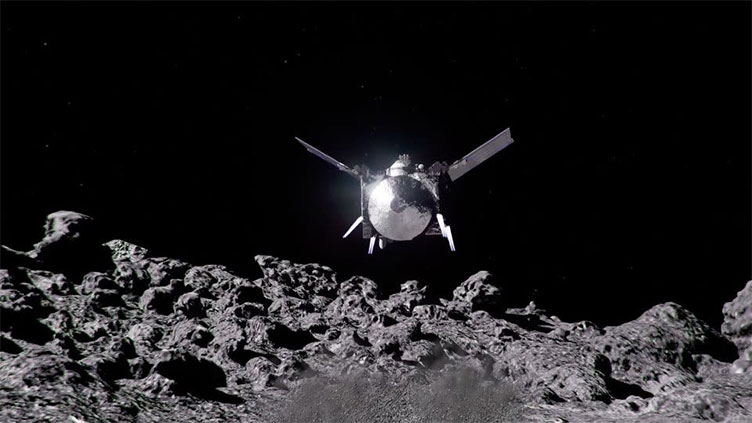NASA's next stop: An asteroid named for the Egyptian god of chaos

Technology
The newly renamed OSIRIS-APEX mission is setting a course for Apophis
(Web Desk) - After a nearly 4 billion-mile round trip, the OSIRIS-REx spacecraft successfully delivered NASA’s first asteroid sample to Earth.
The capsule containing rocks and soil, collected from the asteroid Bennu, stuck a perfect landing in the Utah desert on September 24 after blazing through Earth’s atmosphere at blistering temperatures — enough to completely char the outside of the receptacle.
Now, the rare contents are safely stowed at NASA’s Johnson Space Center in Houston, where scientists will study them to help unlock the secrets of our solar system.
Countless people who have worked on the mission for years celebrated the historic achievement, including Queen guitarist Brian May, who also happens to be an astrophysicist and proud OSIRIS-REx teammate.
But the spacecraft’s epic journey isn’t over yet.
The newly renamed OSIRIS-APEX mission is setting a course for Apophis, an asteroid with a fear-inducing reputation.
The space rock — named for the Egyptian god of chaos and darkness — was once considered to be one of the most potentially hazardous asteroid threats to Earth.
Apophis isn’t on a collision course with our planet anytime soon, the latest research has suggested.
But the asteroid will come so close to Earth in 2029 that people will be able to see it with the naked eye.
And that’s when OSIRIS-APEX will make its move, going into orbit around Apophis and studying it for 18 months. The spacecraft is no longer capable of collecting a sample, but it will use thrusters to kick up dust and rocks to study Apophis’ stony surface.
Archaeologists were excavating a 2,300-year-old tomb in Israel when they came across what may be the remains of a hetaira, or a courtesan of ancient Greece.
The woman’s cremated remains were found inside a cave, along with a well-preserved bronze folding mirror.
She may have been one of the first Greeks to arrive in the region, accompanying a government official or high general during the Hellenistic Age, or between 323 BC and 30 BC.
Several details about her burial, including the rare pristine mirror, hint at the woman’s origins, and researchers hope to uncover more of her story in the future.
Mysterious “fairy circles,” or dot patterns of barren dirt that appear in dryland grasses, have sparked intrigue for decades since being spotted in Southern Africa’s Namib Desert or the Western Australian outback.
A new atlas, pieced together by scientists in Spain using artificial intelligence, reveals that fairy circles may be present at hundreds of places around the world.
The phenomenon that shapes the circles remains a puzzle, but the global atlas will enable research that could illuminate why the polka-dot pattern appears.
Separately, scientists have predicted that the formation of a massive “supercontinent” could make Earth virtually uninhabitable in 250 million years, wiping out humans and mammals unable to cope with excessive heat.


